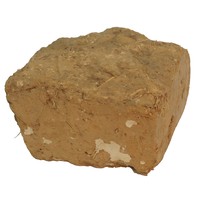Collection Item
ContributeBaked clay brick found on Kangaroo Island.
History
This piece of brick was found on Kangaroo Island. It was donated to the Historical Relics Collection in 1934 by Lady Verco, the wife of Sir Joseph Verco, a noted physician and fellow of the Royal Society of South Australia. It was transferred to the History Trust of South Australia.
Significance
Kangaroo Island has a long history of European settlement and habitation. From 1802 sailors, runaway convicts, and sealers made makeshift camps there. The Island was later chosen as the first place of settlement for the South Australian colony in 1836. Settlers on the Island struggled with poor soil and a harsh environment. As it became more apparent that the island was not suitable for extensive settlement, more of its settlers moved to the mainland. This brick is representative not only of the style of building materials used in the early settlement, but is also indicative of its gradual abandonment of over time. However, despite the fact that many preferred to leave for the mainland, Kangaroo Island continues to be inhabited to this day, which also makes this brick symbolic of the rich migrant heritage of the island.
Description
Corner piece of a baked clay brick. Uneven and holed. Traces of white paint flaking.



Comments
CommentAdd new comment
I wasn't aware of how far back European interaction with Kangaroo Island actually is. Runaway convicts nearly 30 years before the settlement of Adelaide? WOW! The artefact description mentions there are traces of white paint (lime wash?) on the brick. Does this suggest it might have once belonged to a decent dwelling? Fascinating stuff.
It does look a bit like a potato, but I've held the bricks in my hands and can confirm that they are clay and straw, not potato ;)
potato